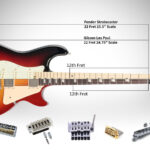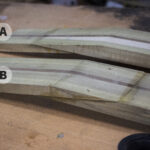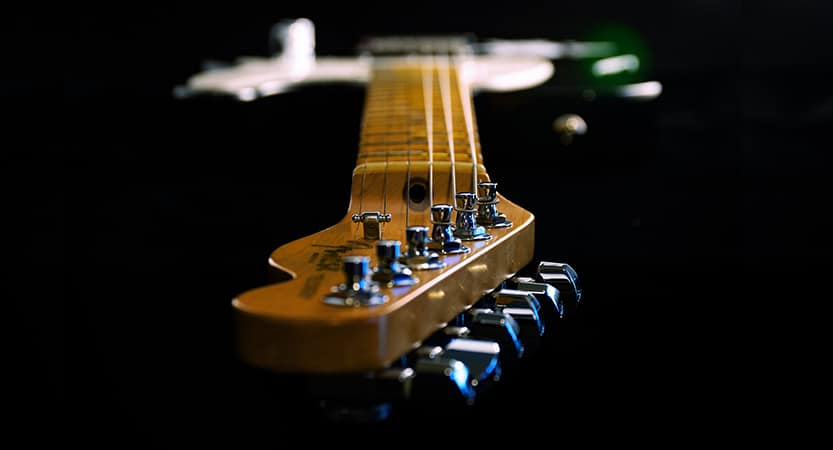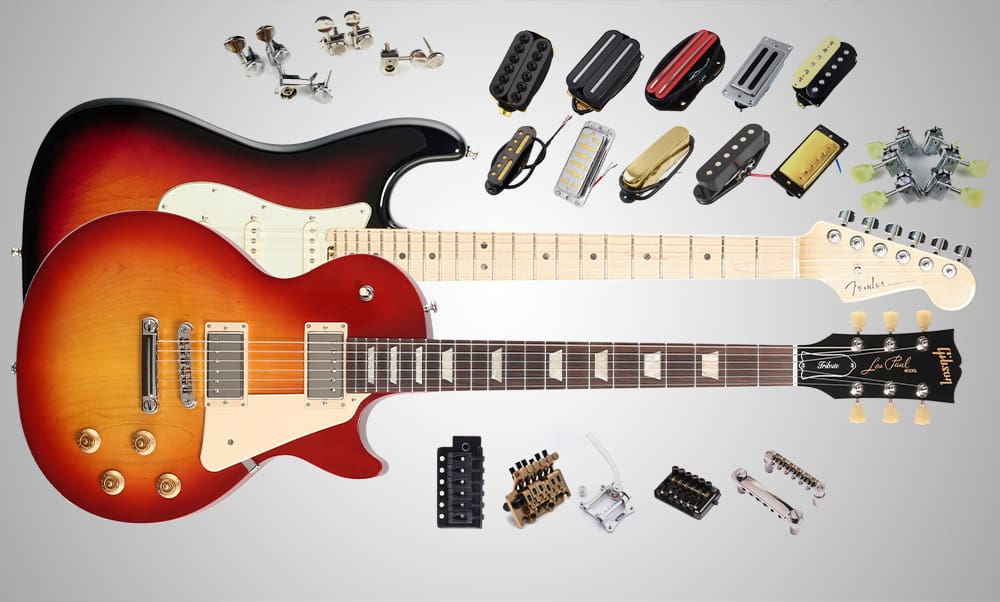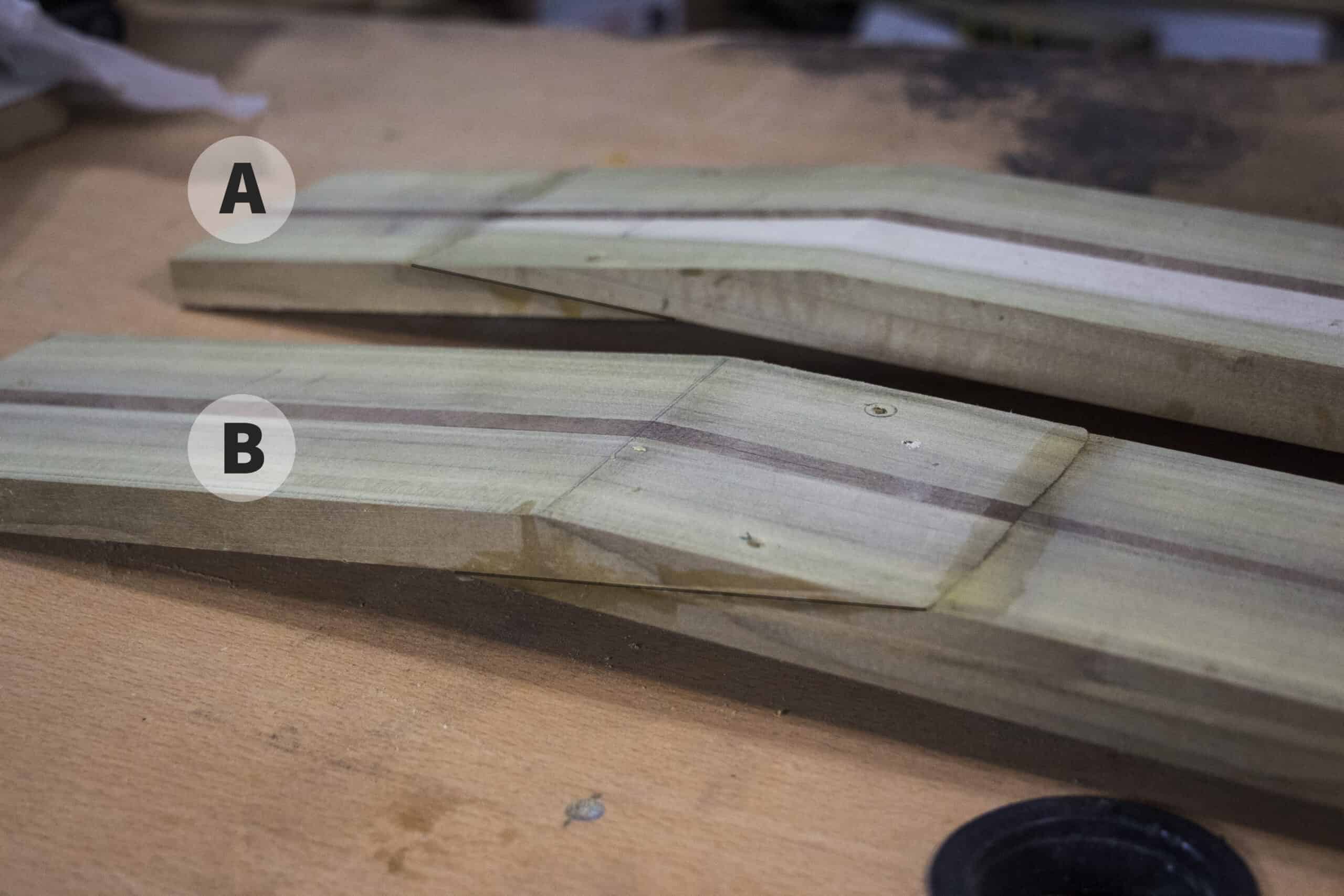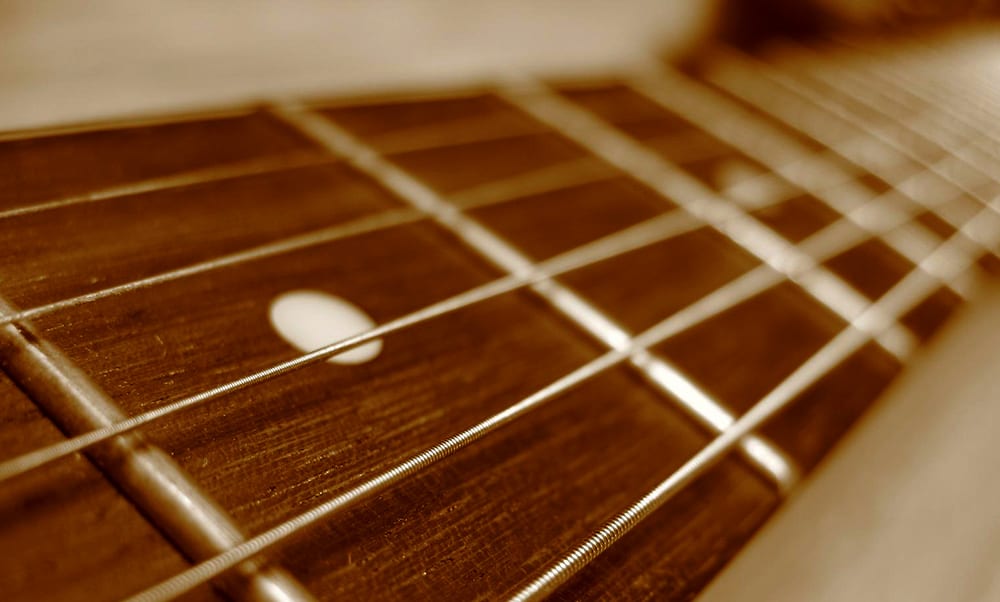If you are a beginner or aspiring guitaris and get a bit confused about the names and the order of the strings and the tuning, we are her to clear all the confusion.
The guitar string names, starting from the thickest, are E,A,D,G,B,E. Part of the confusion is the order, which is first or last, the terminology as far as high vs. low and top vs. bottom. Let’s try and clear it step by step.

Which one is first?
The ‘first’ string is the thin E, or High E. The order of the strings has no actual relevance to the sound or note they convey but is a convention that will be very practical when you start playing or taking lessons, the instruction will often refer to the string s as ‘First’, ‘second’ and so forth, or as ‘A’, ‘D’or ‘G’, interchangeably. The ‘E’ strings will usually be referred to as ‘First String’ or ‘High E’ for the thinnest string, or ‘Sixth string’ – ‘Low E’ for the thickest one.
Why ‘High and Low’ when the thickest string is on Top?
The term ‘Top’ should correlate with ‘High’ and the ‘Bottom’ with ‘Low’ . Some people, when the guitar is in playing position e.g. horizontal, mistakenly refer to the top’ string as the thickest one – the Low E. The reason the string it is called ‘Low E’ has nothing to do with the position on the guitar, it correlates to the notes and the musical scale. The Low E is two octaves lower than the ‘High E’. Meaning it is more bass, low pitch sounding compared to the High E. This will be very intuitive once you start playing. I try and avoid using “top’ and ‘Bottom’ when referring to strings, we have clearer ways to define them.
What do the Letters mean?
There are eight notes in the musical scale: A,B,C,D,E,F,G which is a full Octave (Octa means eight in Latin) This is the musical Alphabet and it repeats itself to higher octaves and lower ones. Each instrument has it’s own range and can reach higher or lower octaves, but will still use eight notes.
If you have played other instruments and are familiar with the Tonal Scale Called “Do-Re-Mi-Fa-So-La-Si”, the names corollate to the notes on a C Major scale, although they are offset and A corresponds to ‘La’ (Not ‘Do’).
Ignore this part if you are not familiar with the Tonal Scale, it will just confuse you and not necessary at the moment.
Is there a trick to remember the guitar strings by letter?
Many teachers try and make silly acronyms and mnemonics to remember. Something like Bat After Drinking Gets Better Eventually. They often use animals and other childish terms to jog the memory. They say the sillier, the better. You can make up your own and if that helps, great.
Personally, I think that instead of going back to kindergarten, lets go forward into playing guitar. Let’s jump ahead and look at a few chords that rely on open strings.
What is an ‘Open’ String?
An open string is just a string played with no finger on any of the frets. A string stops being open when it is fretted.
Most cords use a combination of open strings and fretted strings to enable playing a few notes simultaneously and create a harmony. The chords I’ll use are very common and useful and you will probably run into them in the first few songs you learn.
Back to the chords
I am not going to dive too deep into chords, just for the purpose of understanding and remembering the open strings names.
For example:
- The E chord uses both open E strings and the open B string . The lower E is the dominant sound and gives it it’s name. If you remember this Chord, you should also remember that this open string is the E.
- Similarly with the Am chord , the dominant note is the open A string.
- The D chord has the Open D string as the dominant one. As soon as you remember these three, and they become a second nature (and they will) you need only ‘remember’ the G and B strings, and that’s just two.
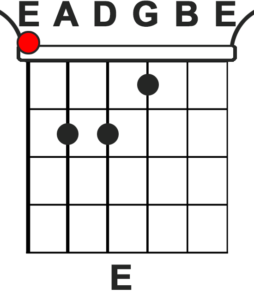
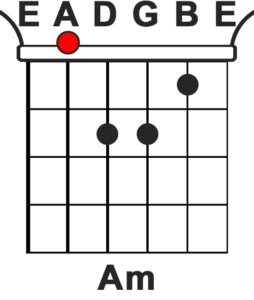
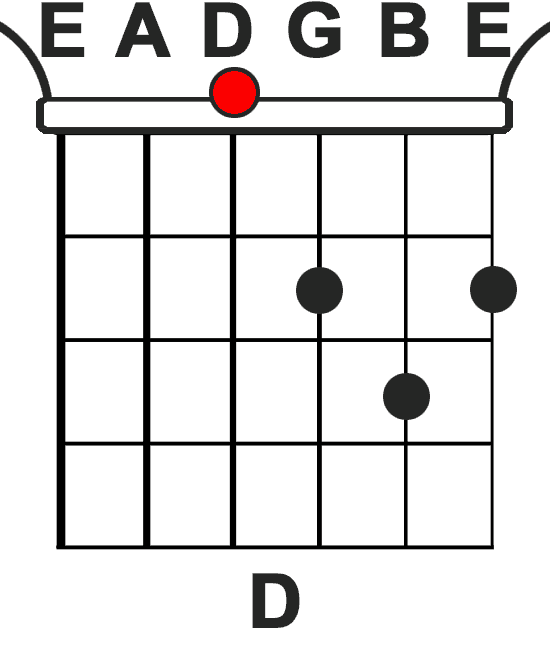
How does this relate to tuning?
Directly actually. In standard tuning:
- The sixth, thickest string is tuned to E. it’s referred to this as the ‘low E string ‘.
- The fifth string is tuned to A, it’s referred to as the A string.
- The fourth string is tuned to D, it’s referred to as the D string.
- The third string is tuned to G, it’s referred to as the G string.
- The second string is tuned to B, it’s referred to as the B string.
- The first, thinnest string is tuned to E, it’s referred to this as the ‘high E string’.
How does tuning work?
Each string is pulled to have the right amount of tension to give the ‘right’ tone when plucked. The thicker the string is the lower the tone it will give under the same tension. The thickness of the strings, relative to each other, enables us to reach tuning while the tension on the strings is quite similar to enable comfortable playing. So when the High E String (The first string) is in tune, the tension will feel similar to the B string (The second) although the tone is different.
Remember that our tones are actually climbing from A to G. If we start tuning from the low E, we skip F and G (they will be fretted on the low E string) and get to the next string, which is A. Again, we skip B and C and get to the next string which is D. Skip E and F to get to the G string. This time we climb up just over the A and get to the B string, and finally skip over the C and D to find the High E.
This tuning will enable us to easily find and reach all the tones on an open string or close to it.
What do you mean by ‘Standard Tuning’?
Tuning is creating the correct tension (turning the tuning key) to reach the desired tone on each open string. In ‘Standard Tuning’ the desired tones are E,A,D,G,B,E as shown above. Standard tuning works well with the chord shapes and scales. However, it is limiting in the since the you can’t play a lower tone than you Low E. More and more musicians choose to tune some or all of the strings to a different tone than the standard. At first thought this seems very confusing to the player, but to the experienced guitarists it opens up more options and more variations of tones to play with. Just as example: Heavy Metal players often use ‘Drop D tuning’ which means that their lower E string is not tuned to E, but is loosened to get to the lower D tone. It gives a deeper feel to the playing.
It is highly advisable to have a firm understanding and playing capabilities before venturing into alternate tunings.
Are those names also applicable for acoustic and bass guitars?
As far as open string and standard tuning goes, yes, all guitars, Classic, Acoustic, Electric and even Bass use the same tuning. A standard, four string Bass Guitar is just missing the B and High E strings, therefore it will have E,A,D and G.
A 12 string guitar will also share the same tuning with every string doubled. A 12 string has more of six doubles than twelve individual strings, so the A string will have another A string as his partner but the second one will be tuned an octave higher.
The Bottom line, what should I remember?
We are trying to understand and remember the names of the open strings’ tones in a standard tuning. You may click better with chords, systematic analyzing or through a silly rhyme, just remember, starting from the sixth string, the thicker Low E: it’s E,A,D,G,B and High E.
Related Questions
What is the tuning on a 5 String Bass?
Since it’s a Bass, the additional string in not a high B as you may expect but a Low B.
What is the tuning for a 7 String electric guitar?
Much like the 5 string Bass guitar, the additional string is a Low B, and just like the more common Dropped D tuning used in metal, a 7 string can have its Low B dropped to a Lower A.



